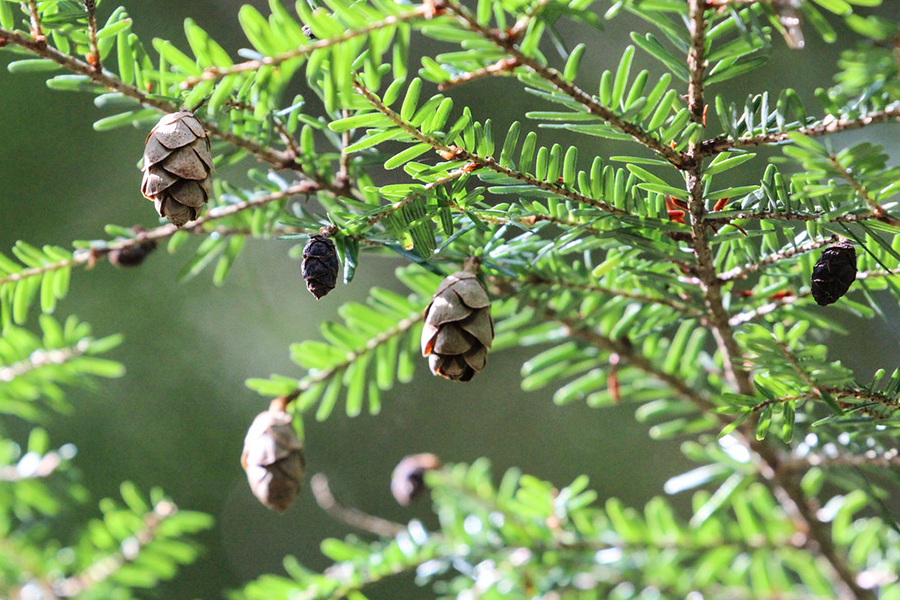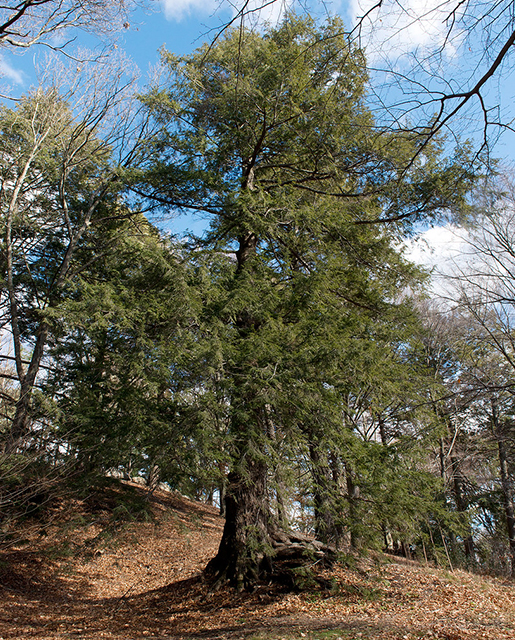Tsuga canadensis
Eastern hemlock is an evergreen, coniferous tree that can live for up to 500 years. An important part of late succession forests in the northeastern United States, eastern hemlock populations are under threat from a sap-sucking insect called hemlock woolly adelgid.
Location
Today, a great place to see eastern hemlock is on the cutoff trail connecting Larch Lane and the Hidden Spring Trail.


History at Hadwen
The eastern hemlock was an original planting by Hadwen himself. In 1900, Hadwen said “[hemlock] is perhaps the best of the coniferous trees. When standing alone it forms a shapely and graceful tree; the marked and distinct contrast in color of the new and old foliage is always pleasing, and when it is covered with light snow it forms an object of beauty unequalled in winter scenery. For this climate, it may be justly called the queen of the evergreens.”
Keep Learning
Detailed Species Information
Eastern Hemlock is an evergreen tree in the family Pinaceae native to the Great Lakes region, Appalachian mountains, northeastern United States, and parts of southeast Canada. These long-lived trees can reach 500 years in age and 100 feet (30 meters) in height. They are characterized by tall straight trunks and downward-reaching branches. The bark is brown and scaly and becomes deeply fissured with age. The leaves are flattened green needles about half an inch in length (13 millimeters). The eastern hemlock seeds are contained in small cones about an inch (2.5 centimeters) or less in length.
Eastern hemlocks are typically found in highlands with cool, moist conditions. Highly tolerant of shade, they can establish in the understories of forests and live to become part of the overstory in late succession forests. Despite the eastern hemlock’s ability to tolerate varied soils and light conditions, it is currently threatened by a small insect introduced from Asia in 1924 called hemlock woolly adelgid (Adelges tsugae). These insects suck the sap from the trees, slowly killing branches and eventually the trees. Currently, the eastern hemlock is considered to be Near Threatened on the IUCN Red List.
Eastern hemlock is generally considered to have low-quality lumber, but its wood is sometimes used for pallets or pulp. Historically, the bark was a commercially viable source of tannin used to make leather goods. Eastern hemlock is widely cultivated with over 300 cultivars, many of which are dwarf forms and shrubs. Due to the rare combination of coniferous and shade tolerance, as well as its ability to withstand pruning, eastern hemlock is a versatile ornamental.
